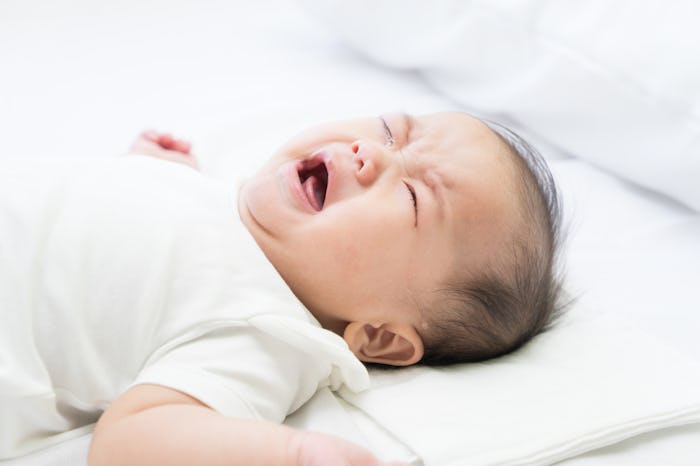Life

This Is What Lyme Disease Looks Like In A Baby, According To An Expert
Summertime is for being outdoors — unless you live in the south, when it’s a time for sweet iced tea and air conditioning. (Or is that just me?) If you do embrace the heat and go outside — especially in heavily wooded areas — you have to be careful of nature’s little annoyances — ticks. They can be particularly scary, especially with children. If you notice a tick on your baby, what are the chances of them getting Lyme disease? What does Lyme disease look like in a baby?
Thankfully, babies rarely get Lyme disease because they have limited exposure to ticks and parents look more carefully at their baby and their skin, which helps in identifying and removing the tick quickly, according to pediatrician Jarret Patton. But if they do become infected with the disease, babies have a weaker immune system in the first 4 to 6 months of life, Patton tells Romper, and “they may not develop the characteristic target rash that children and adults get with Lyme disease. The symptoms could be nonspecific, and without a history of a tick bite, an evaluation would need to be done to identify Lyme disease."
In order to even have a chance of getting Lyme disease, a tick would have to be attached to your baby for at least two or three days, and “if it’s removed prior to 24 hours of attachment, it’s very unlikely that any pathogens, if present, will infect the baby,” Patton says. “But remember, every tick does not carry the bacteria that causes Lyme disease.”
So if you do find one, what is the safest way to remove a tick from a baby? Patton recommends using tweezers to grasp the tick by the head, and definitely not the body. “Gently pull back on the tick without squeezing. The area with the bite can be cleaned with alcohol and treated with an antibiotic ointment. There is no further need for action, however some pediatricians may want to test the tick if you are in an area with high disease activity," he says. It’s really important you grab it by the head and not the body so pathogens aren’t released, which raises the risk of contracting the disease.
Patton does add that "if the head of the tick remains embedded in the skin and is unable to be pulled out, it will work itself out with routine washing. Do not attempt to cut the skin to pull it out."
But if you’re worried, take your baby to their pediatrician to safely remove the head with the proper tools and equipment.
Even if your baby does contract Lyme disease — which is very unlikely — Patton says the symptoms may be treated safely with a round of antibiotics.
This article was originally published on